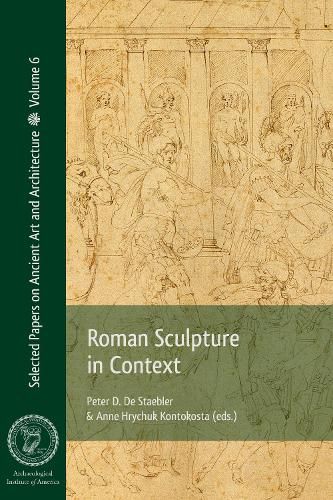Readings Newsletter
Become a Readings Member to make your shopping experience even easier.
Sign in or sign up for free!
You’re not far away from qualifying for FREE standard shipping within Australia
You’ve qualified for FREE standard shipping within Australia
The cart is loading…






This volume tackles a pressing issue in Roman art history: that many sculptures conventionally used in our scholarship and teaching lack adequate information about their find locations.
Questions of context are complex, and any theoretical and methodological reframing of Roman sculpture demands academic transparency. This volume is dedicated to privileging content and context over traditions of style and aesthetics. Through case studies, the chapters illustrate multivariate ways to contextualize ancient objects. The authors encourage Roman art historians to look beyond conventional interpretations; to reclaim from the study of Greek sculpture the Roman originals that are too often relegated to discussions of copies and models ; to consider the multiple, dynamic, and shifting contexts that one sculpture could experience over the centuries of its display; and to recognize that post-antique receptions can also offer insight into interpretations of ancient viewers.
The collected topics were originally presented in three conference sessions: Grounding Roman Sculpture (Archaeological Institute of America, 2019); Ancient Sculpture in Context (College Art Association, 2017); and Ancient Sculpture in Context II: Reception (College Art Association, 2019).
$9.00 standard shipping within Australia
FREE standard shipping within Australia for orders over $100.00
Express & International shipping calculated at checkout
This volume tackles a pressing issue in Roman art history: that many sculptures conventionally used in our scholarship and teaching lack adequate information about their find locations.
Questions of context are complex, and any theoretical and methodological reframing of Roman sculpture demands academic transparency. This volume is dedicated to privileging content and context over traditions of style and aesthetics. Through case studies, the chapters illustrate multivariate ways to contextualize ancient objects. The authors encourage Roman art historians to look beyond conventional interpretations; to reclaim from the study of Greek sculpture the Roman originals that are too often relegated to discussions of copies and models ; to consider the multiple, dynamic, and shifting contexts that one sculpture could experience over the centuries of its display; and to recognize that post-antique receptions can also offer insight into interpretations of ancient viewers.
The collected topics were originally presented in three conference sessions: Grounding Roman Sculpture (Archaeological Institute of America, 2019); Ancient Sculpture in Context (College Art Association, 2017); and Ancient Sculpture in Context II: Reception (College Art Association, 2019).